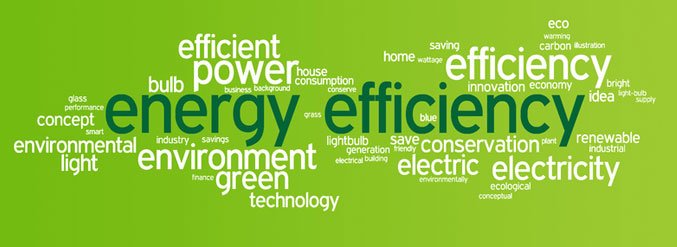Throughout our eco-conscious (and money-conscious) age, there’s really no excuse for wasting energy in your house. You will find numerous extremely easy, small things you can do now to minimize your use of energy resources and reduce your bill from the utility company. In 2015, families and businesses who simply switched to more energy-efficient appliances shaved a combined $34 billion off their utility bills.

Steps to making your home energy efficient
Replace your light bulbs
The everyday American household spends 5 to 10 percent of its energy budget on lighting alone, as reported by the DOE. Incandescent light bulbs might produce a nice homey glow, however only 5% of their energy consumption is really converted into light. Today’s LEDs, on the other hand, are on average 85% more efficient than incandescents.
Swapping your incandescents with warm-colored LED bulbs could help you save $100 per year on energy costs. In accordance with the DOE, “LEDs are projected to reach over 80% of all lighting sales by 2030…This would save Americans $26 billion each year in electricity costs, while cutting America’s lighting electricity use by up to 50 %.”
Unplug energy vampires
Were you aware that even after it’s fully charged, leaving your cell phone plugged in will continue to pull power from the grid? Same goes with your laptop, TV, stereo, game console, and any other electronic device. These unused-but-plugged-in devices draw unnecessary energy that accumulates as time passes. Get in the habit of unplugging chargers as soon as a device is fully powered-up, and plug your non-battery-powered electronics into power strips that you could turn off when not in use.
Close your windows
You’d think this one would be a no-brainer, but You’d be blown away at how many times people complain about drafts and heat leakages in the winter and you visit and there’s open windows-cords for Christmas lights running out the window or bad seals. In summer, if the accordion wings around the AC don’t fit properly, you might as well put it in the driveway. You’re cooling outside.
Simple things like adding weather stripping to windows and doors is a very affordable way to retain your home’s internal temperature, often paying for itself in energy savings within a year.
Install an automatic thermostat
You can save yourself up to 10% on your annual heating and cooling costs by dialing back your thermostat 7 to 10 degrees Fahrenheit from its normal setting for eight hours each day. Specifically if you live in extremely hot or cold climates, installing an automatic thermostat will make a major difference with regards to cutting energy use without giving up comfort.
Automatic thermostats could cost as little $18. Higher-end smart thermostats such as Nest or Ecobee will even learn your preferences and behaviors, automatically turning off your system when you’re away from home or away on vacation.
Air seal your attic and basement
If someone’s trying to make a much larger investment, we’d recommend air sealing and insulating the top and the bottom of the building. Especially if the house was built before World War II, that’s where you have a tendency to locate the most leakage. That’s in part mainly because these are the places in all probability to have actual holes cut into the building envelope to create ways for pipes and wires. The basement can also be where the main frame of the home comes into physical contact with a stone or concrete foundation, creating the potential for more air-leaking gaps.
Think of your home’s air sealing and insulation such as a windbreaker worn over a sweater. If there’s a rip or you leave the windbreaker unbuttoned, it can’t help much. Therefore we fix the sweater by making the insulation more significant and we improve that air seal anywhere the indoor space is linked to the outdoor space.”
For lower-lift solutions, the DOE offers instructions for various DIY weatherization techniques, like how you can air seal leaks with caulk and ways to properly cover attic stairs. Many states offer financial aid for weatherizing your home, so you’ll want to check out your state’s weatherization agency before you make any large investments.
Get a home energy audit
The most cost-effective, thing you can do is get a comprehensive, whole-house energy assessment. In most places, you get a subsidized assessment if you make under a specific amount every year, and after a 2-3 hour walk-through, you’ll receive a comprehensive list of recommendations.”
Have a questions or concern? Nick & Cindy Davis with RE/MAX Premier Group are here to assist you. We are always a just a click here away.
Would you like to stay up to date with everything happening in the Real Estate Market?
Need Assistance Now? Call 813-300-7116